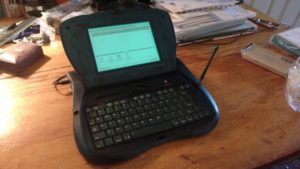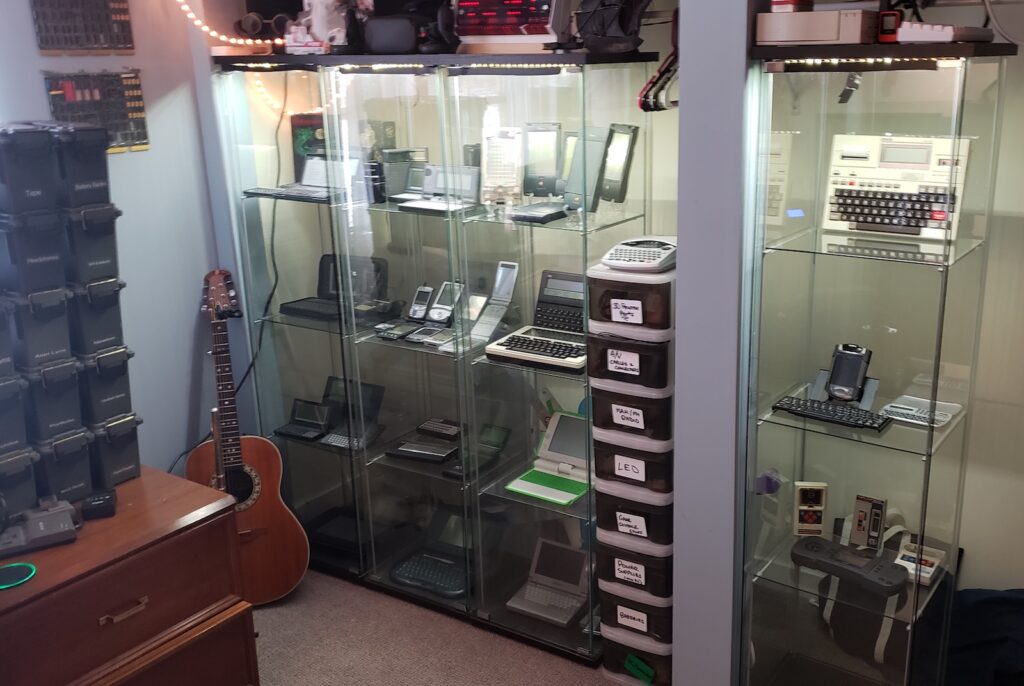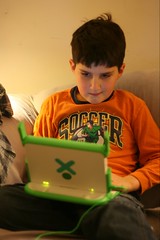There’s been some awful FUD flying around the OLPC world in the last few days, with misquotes, misinformation, and flat out lies being propagated left and right. Even Engadget, one of the better geektech blogs out there, got it completely wrong regarding OLPC CTO Mary Lou Jepsen’s departure from the project.
Fortunately, there’s good resources around that tell the story from the people who really do know what is going on. First, there’s the interview with Mary Lou Jepsen on Groklaw. In it she explains the real reasons behind her choice to move on to Pixel Qi, and her ongoing relationship with OLPC. Astute readers will note that her commentary there bears little or no resemblance to some of the FUD flying around other news sites.
Of particular interest is this tasty quote. There’s been lots of noise about OLPC squashing competition (in particular, the Classmate PC), and making unreasonable demands from Intel. That’s complete hooey. Competition should be between competitive products. So how does the Classmate stack up against the XO?
Classmate is more expensive, consumes 10 times the power, has 1/3 the wifi range, and can’t be used outside. Also, the Classmate doesn’t use neighboring laptops to extend the reach of the internet via hopping (mesh-networking) like the XO does. So not only is the XO cheaper than the Classmate, the XO requires less infrastructre expenditure for electricity and for internet access. In Peru we can run off of solar during the day and handcrank at night for an additional $25 or so per student – this is one-time expense – the solar panel and the crank will last 10 or perhaps 20 years. Just try running electricity cables up and down the Peruvian Andes for that cost while making sure it’s environmentally clean energy. The Classmate isn’t as durable as the XO, and its screen is about 30% smaller, the batteries are the type that can explode and only last 1-2 years and can’t be removed by the user and harm the environment. The batteries are expensive to replace: $30-40 per replacement. The XO batteries last for 5 years and cost less than $10 to replace. Finally, the XO is the greenest laptop ever made, the Classmate isn’t – this matters a great deal when one proposes to put millions of them in the developing world.
Given that comparison, why would any country, any organization, pursue the Classmate over the XO? Answer? Underhanded dealings, lies, and unfair practices. That is not to say that aggressive competition doesn’t happen in the marketplace at large, but OLPC is not trying to compete in a marketplace. It has a mission to do some good in the world. It’s purpose is not to broker back room deals to increase stockholder value. It’s goals are far more noble, something that carries far too little weight in the world today.
Back on the clarification train, we have the inimitable Ivan of OLPC giving the full details behind the whole ‘Microsoft Dual-Boot XO Laptop” spiel. Unsurprisingly, it’s nothing like what the blogs and the news sites are characterizing it as. I’m rather disappointed that the tech community seems to be aggressively looking for a reason to bash the OLPC project – looking for schisms, problems, and interpreting every change or update in the project as a sign of it’s imminent demise. While it’s certainly common to see this all the time in mainstream media, I had, perhaps naively, hoped the geek world would take a broader, less sensationalistic approach to reporting on this project. Sad to say, that’s doesn’t seem to be the case.
Doesn’t matter. The project is a success, and continues to be so. And I for one am glad.
 For those who missed the first Give One Get One program, the
For those who missed the first Give One Get One program, the 





